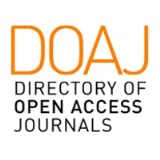The short film: an educational alternative
DOI:
https://doi.org/10.58265/pulso.5194Keywords:
short film, education, class/student interaction, conflictAbstract
The problems and conflicts school teachers face nowadays sometimes cause them to search for less conventional measures to carry out an optimal educational process in which the student becomes the principal actor in the construction of their own learning and acquisition of knowledge. The main objective of this article is to provide guidance and experience for possible actions that the reader may exercise in the classroom. More specifically, it is intended to convey the process of recording a short film in a high school classroom with serious problems of student interaction, obtaining positive results that led to a radical change in the students´ conduct and an unprecedented harmony in the classroom.
Downloads
References
Blázquez, F. (1994). Propósitos informativos de las nuevas tecnologías de la información en la formación de maestros. En Blázquez, F., Cabero, J. y Loscertales, F. (Coords). Nuevas tecnologías de la información y comunicación para la educación. (pp. 257-268) Sevilla: Alfar,.
Buckingham, D. (2002). L’educació mitjans de comunicació i la fi del consumidor crític. Document de treballde les III JornadesTécniques del Projecte Educatiu de Ciutat. Comunicar i educar. Barcelona: Ajuntament de Barcelona.
Cain, T. (2008). The charactericties of action research in music education. British Journal of Music Education, 25/3, 283-313.
Casals, A., Vilar, M., Ayats, J. (2008). La investigación-acción colaborativa: reflexiones metodológicas a partir de su aplicación en un proyecto de música y lengua. Revista Electrónica Complutense de Investigación en Educación Musical, 5/4, 1-17.
Eisner, E.W. (1998). El ojo ilustrado: indagación cualitativa y mejora de la práctica educativa. Barcelona: Paidós.
Escudero, J.P. (2012). Interculturalidad e integración social en el aula a través del flamenco y los medios audiovisuales. Orientaciones y propuestas didácticas. Dedica. Revista de Educaçao e Humanidades, 3, 259-270.
Giroux, H. (1997). Cruzando límites. Trabajadores culturales y políticas educativas. Barcelona: Paidós.
Latorre, A. (2003). La investigación-acción. La investigación-acción. conocer y cambiar la práctica educativa. Barcelona: Graó.
Mayugo, C., Moix, M., Ricart, M., Reñé, S. (2005). Representación mediática y producción audiovisual adolescente. Comunicar: Revista científica iberoamericana de comunicación y educación, 25/ 2, 1-9.
Mclaren, P. (1997). Pedagogía crítica y cultura depredadora. Políticas de oposición en la era posmoderna. Barcelona: Paidós. (1ª edición en lengua inglesa del año 1995).
Roberts, B. (1994). Music teachers as researchers. Internacional Journal of Music Education, 23, 24-33.
Rodriguez-Quiles, J. A. (2001). De la Orientación en la Acción a la Interpretación Didáctica de la Música: ¿Por dónde caminamos en Educación Musical?. En Perales F. y otros (Ed.). Las Didácticas de las Áreas Curriculares en el Siglo XXI, Vol 1.(pp. 345-363). Granada: Grupo Editorial Universitario,
Rodriguez-Quiles, J. A. (2006). Socialización musical y contexto escolar” Música y Educación, 65, 65-78.
Romero, J.B. (2004). Las nuevas tecnologías y la expresión musical, otros lenguajes en la educación. Revista Comunicar, 23, 25-30.
Ruiz Carmona, M. (1992). La cultura andaluza en la Educación Primaria. Consejería de educación de la Junta de Andalucía. Materiales curriculares para la etapa de Educación Primaria, Vol III. Sevilla: Consejería de Educación.
Sedeño, A.M. (2002). Música e imagen en el aula. Revista Comunicar, 18, 137-140.
Taberner Guasp, J. (2003). Sociología y Educación. El sistema educativo en sociedades modernas. Funciones, cambios y conflictos. Madrid: Tecnos.
Downloads
Published
How to Cite
Issue
Section
License
Copyright (c) 2022 Pulso. Revista de educación

This work is licensed under a Creative Commons Attribution-NonCommercial-NoDerivatives 3.0 Unported License.
This journal offers immediate open access to its content based on the idea that offering readers free access to research favours a global exchange of knowledge.
Papers are published in the electronic version of the journal under a Creative Commons License: Attribution-NonCommercial-No derivatives 4.0 International
Authors are allowed and encouraged to promote the post-print version (reviewed and accepted for publication version) of their work online before publishing them. This favours their earlier circulation and dissemination and thus a possible increase in their citation and reach among the academic community.













